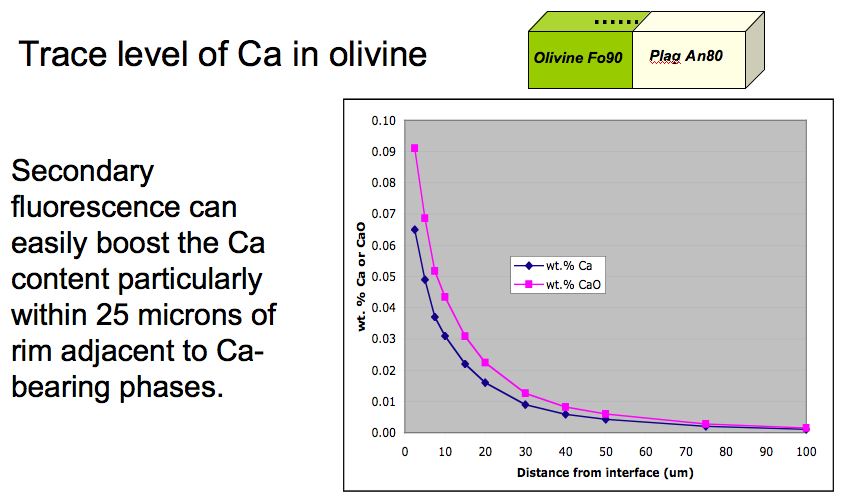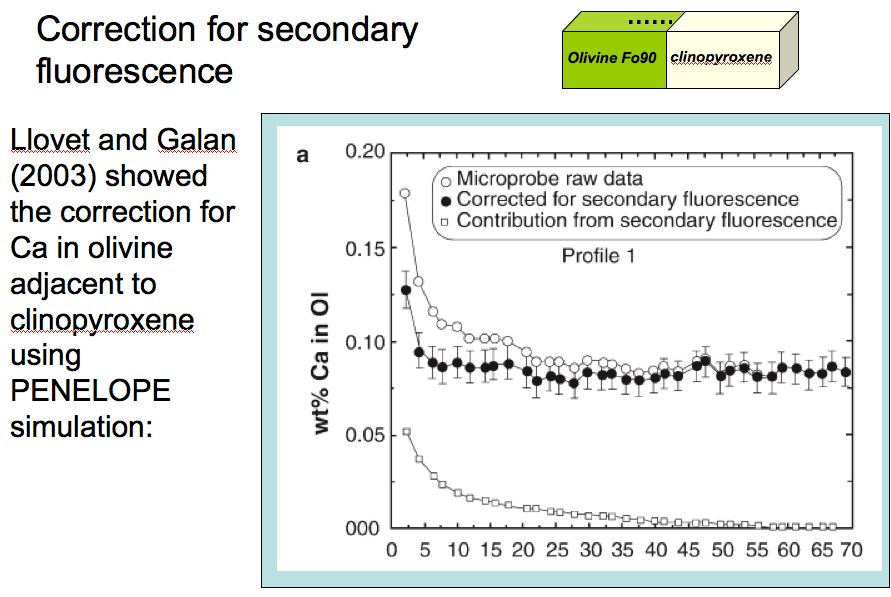
Ca in olivine has been studied by many people for petrogenetic considerations (following the work of Simkin and Smith, who suggested mantle/xenolithic Fo-rich olivine had low Ca, whereas volcanic olivine had higher Ca contents). It is typically measured by EPMA at a low level, usually under 0.2 - 0.1 wt %. In separated grains, there is no issue, but for in situ olivine where there is adjacent Ca-rich material (e.g. plagioclase, cpx, or basaltic glass), there is the possibility that some of the Ca is an artifact of secondary fluorescence.
In 2004*, one of the students in the Geo777 probe class ran some Penepma simulations, shown here:

*Fall 2004 students Jacques Kelly, Justin Gosses, Caroline Webber, Kathy Staffier
Llovet and Galan in their important 2003 American Mineralogist paper introducing PENEPMA to geologic applications, studied a similar situation (olivine adjacent to cpx) and showed how it was possible to use the results to correct actual measurements:

Llovet and Galan (above) showed that instead of a diffusion type profile, the Ca actually is virtually constant from 5 microns inward from the rim.
Return to Secondary Fluorescence page